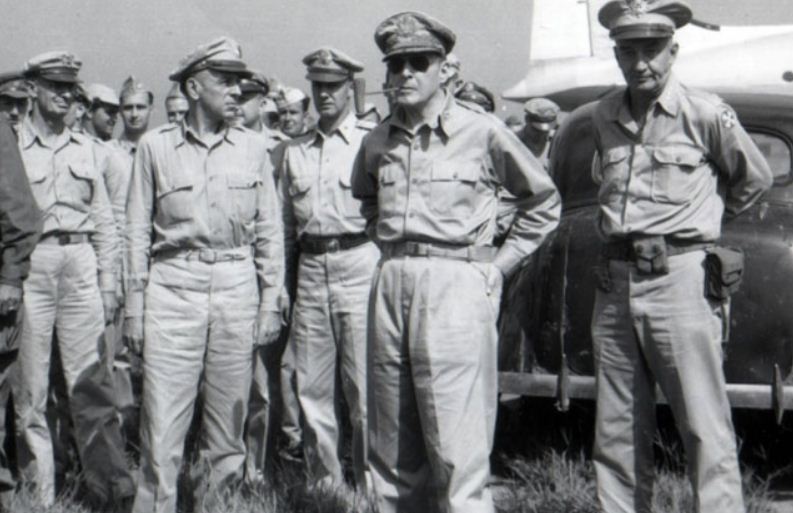Although the West Point site has been occupied continuously by troops since 1778, it did not belong to the US government until 1790, when at the request of its owner, Stephen Moore, Congress took the money for its purchase. Further acquisitions are made from time to time.
 |
| History West Point |
The establishment of an American military school was proposed by General Henry Knox in 1776, and Washington and Alexander Hamilton repeatedly pressed for implementation of the plan. During the Revolution, the United States would have to rely on foreign military technicians like Baron von Steuben, and it was clear that the young nation needed to develop its own officer corps. Washington, also an engineer, also feels that mastery of military technology requires a longer study and cannot be obtained by training alone. However, it was not until March 16, 1802, that Congress passed the legislation establishing the United States Military Academy at West Point. The academy opened on July 4, 1802. Prior to 1812, it served as an apprenticeship school for military engineers and, in effect, as the first US engineering school. However, during its early years, this institution suffered from inappropriate organization and discipline.
The act of Congress of 29 April 1812, reorganized the academy and increased the strength of the cadet corps to 250, expanded the academy staff, and established a four-year curriculum. These legislative objectives were ineffective until the superintendent Colonel Sylvanus Thayer (1817–1933), known as the "father of the military academy" for his lasting influence on West Point's physical factory, library, curriculum and pedagogical methods. Under Thayer's leadership, the academy produced military technicians whose skills could be adapted to meet the civil engineering needs of the internal repair program that accompanied America's westward expansion. The act of Congress of July 13, 1866, allowed the election of supervisors for military academies from branches of the army other than the Corps of Engineers.Registration and Educational Programs
The academy is under the direct supervision and control of the Department of the Army, exercised through the supervisor, in which is given direct military command from the academy and military posts. The aim of the educational program is to instruct and train a corps of cadets so that each graduate will possess the qualities and attributes essential for continuous development through a lifetime career as an officer in the army. A four-year course of college-level education and training leading to a bachelor of science and commission degrees as second lieutenant in the army. The curriculum is balanced between mathematics and basic and engineering sciences, humanities and social sciences, military science, and physical education.
Cadets must be at least 17 years of age but not yet 23 years of age at the time of their appointment. In addition, they must be unmarried and have no legal obligation to support children, and women must not become pregnant. They must have a high school education or equivalent and must take a scholastic aptitude test and medical examination prior to entry. Most of the appointments to the academy are made by US senators and representatives. In a typical year, more than 15,000 young men and women apply for admission to West Point. About a quarter of applicants reach the nomination stage, and half of them are judged to be eligible for entry. Less than 10 percent of applicants - about 1,200 cadets - are accepted each year. The total enrollment is usually around 4,400. Citizens of more than 150 other countries, if eligible, can also be admitted to the academy, although the total international cadet enrollment is limited to 60.Women were first admitted to the academy in 1976.
The academic year runs from August to May inclusive. The third grade (sophomores) receives extensive field training in the training area on the academy reservation. The second and first class (junior and senior) receive additional instruction at other army training centers. The second class also took part in amphibious maneuvers along with midfielders from the United States Naval Academy in Annapolis, Maryland. Class one serves as instructor for the new fourth grade (freshmen), who enter the academy in July; they also help train the third grade.
United States Military Academy Notable Alumni
West Point has trained most of America's great military commanders since the first half of the 19th century. Among his graduates were Robert E. Lee (class of 1829), William T. Sherman (1840), James Longstreet (1842), and Ulysses S. Grant (1843). The extraordinary class of 1846 graduated Thomas ("Stonewall") Jackson, George H. Gordon, George McClellan, and George Pickett. Two of the most gifted cavalry commanders of the American Civil War - Philip Sheridan (1853) and Jeb Stuart (1854) - had finished in two years, and George Armstrong Custer (1861) had graduated last in his class just a month before hostilities had begun at Bull Run.
 |
| United States Military Academy Notable Alumni |











